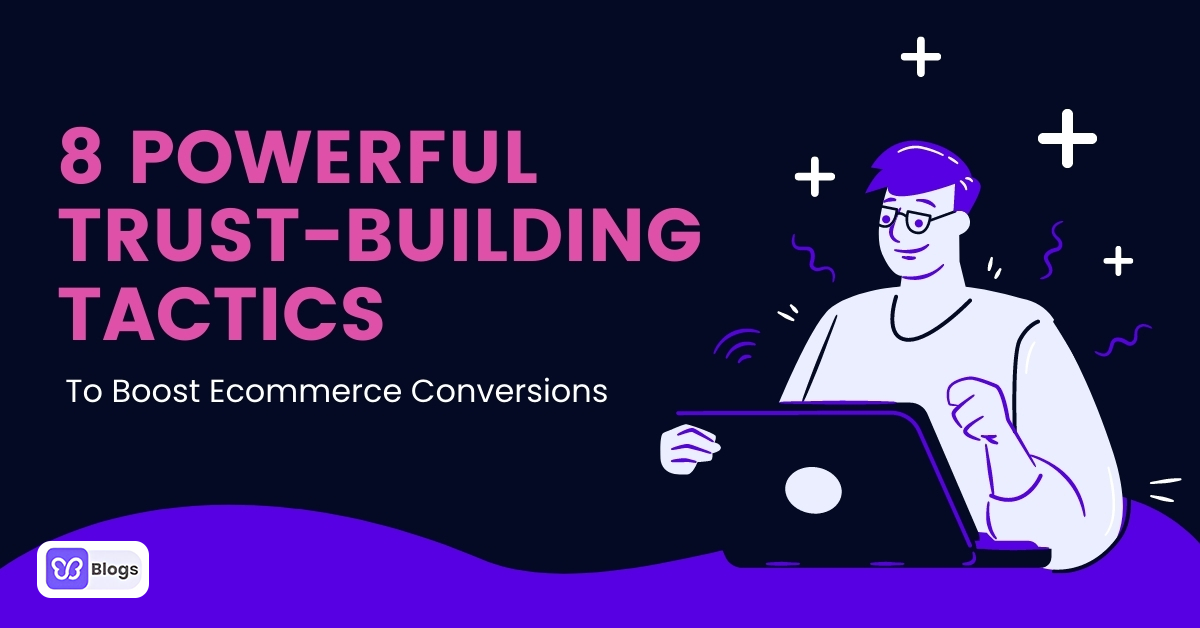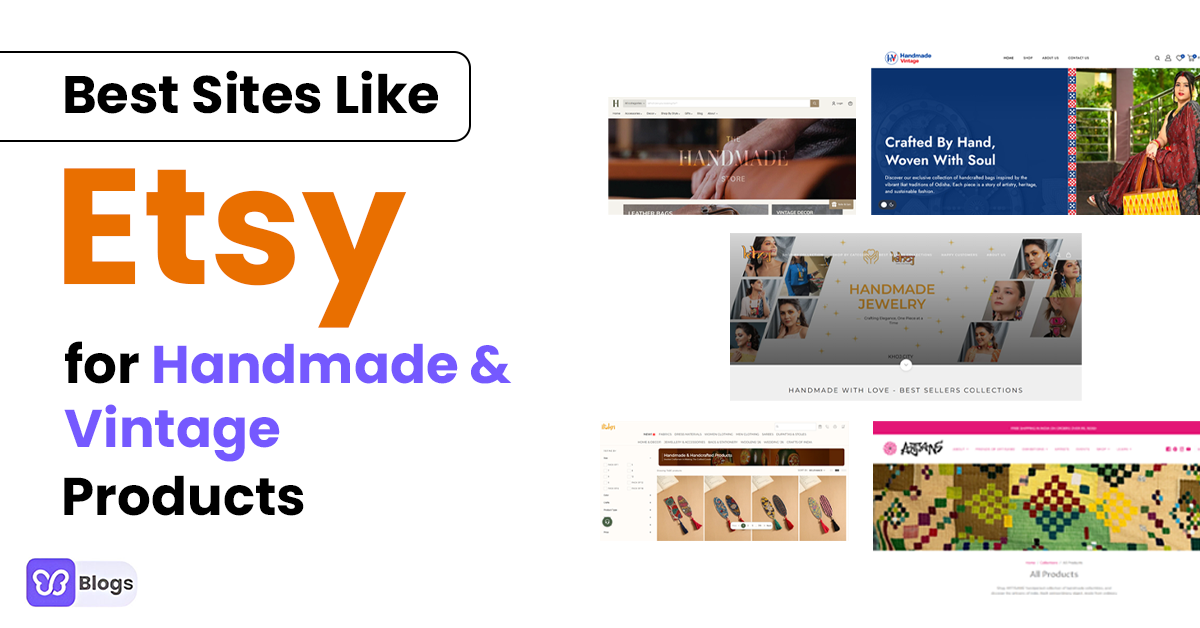Trust is the new currency in ecommerce, and in 2025, it's non-negotiable.
With AI-generated everything, deepfakes, and endless online choices, today’s consumers are more skeptical than ever. Winning their confidence isn’t just a nice-to-have. It’s the core driver of conversion, retention, and long-term brand equity. In this article, we’ll break down the exact steps to build real, lasting trust with your audience, and turn that trust into measurable growth.
1. Help Your Customers Secure Their Data
Ecommerce stores that show they care about their customers’ security are more likely to be trusted in the long run. There are a couple of important things that can help people secure their data before they even make a purchase.
Strong Passwords Made Easy
Many stores require customers to create accounts for easy checkout tracking, among other reasons. Consider adding a strong password generator and easy 2-Factor Authentication (2FA) to your store. This will let your customers know you care about their safety.
Store As Little Customer Data As Possible
Even as potential buyers create secure accounts, store as little data about them on your servers as possible. The less data you store, the less your clients have to worry. Let them know that. The next section details serious regulations about this.
2. Protect Your Customers’ Data
Data breaches that lose customer data can seriously hurt your business. Most customers won’t shop with your store if their data is lost. Data can be stolen from a company or a person in many ways.
Clearly displaying your compliance to data safety and security standards on your landing pages shows you care about security. Each industry has many standards, but these three are important for any eCommerce store.
Payment Card Industry Data Security Standard (PCI-DSS)
Ecommerce businesses depend on cashless transactions. Any credit card-related sale or purchase must make sure a user’s data is protected. It doesn’t matter how big the bill is or how much money they have.
This standard requires evidence that your store is using a secure checkout cart on your site and that customer card details are stored securely. One of the common ways to reduce the chances of losing client data is to store it with a credit card vault.
The secure vault gives your store a token linked to your customer so that you can track repeat purchases.
General Data Protection Regulation (GDPR)
In 2018, the European Union (EU) put in place regulations to protect the privacy and data of anyone accessing the internet in Europe. The GDPR gives users more control over what data can be collected about them. They can request to see what data is collected and for it to be deleted.
There are very heavy fines for companies that do not comply with the GDPR, going up to $20 million or 4% global revenue depending on which is higher. That’s a lot to pay for an eCommerce store.
California Consumer Privacy Act (CCPA)
CCPA provides data security and privacy regulations to protect internet users living in California. It is very similar to the GDPR, giving users the right to access and ask for their data to be deleted.
The CCPA also has data encryption requirements such as data-centric encryption methods that are passed on to any other companies that may share user data.
This makes sure the data is anonymous at all stages. Although the CCPA is very strict, it mainly affects companies that make over $25 million in revenue per year, collect data from over 50,000 residents of California, or makeover 50% of their revenue from selling data about residents of California.
3. Build Trust Through Social Media
When someone sees a social media post about your product on their friend’s feed, they are more likely to visit your store than through a paid advert.
This is called social proof, and it is one of the fastest ways to gain trust from potential customers. Your objective is to make it easy for buyers to share their purchases on social media by creating user-generated content. Clear and large ‘Share’ buttons are the first step.
Every Social Media Platform Is An Opportunity
Create social media accounts for your brand on Instagram, Pinterest, Twitter, Facebook, etc. Each of these platforms has strengths that you can definitely benefit from.
For example, engagement on Twitter for customer service is a great way to get feedback. Instagram product tags can link directly to your store for easier and faster checkout. Facebook is great for all-around engagement and targeted advertising.
The more your customers see your brand in their feeds through their mutual connections, the more likely they are to visit your store and make a purchase. This can be through regular how-to posts, motivational posts, or competitions.
Influencer Collaborations Build Trust Fast
Influencers are people with large and engaged followings. Collaborations with either macro or micro digital influencers will bring brand visibility to a wider audience.
When people see your brand with a person they are familiar with and trust, they will start to trust your brand too. Every social media platform has different price ranges and reach, but they all have something to offer.
4. Set Up A Friendly ‘About Us’ Page
Buying from an online store is not very different from buying in real life. It’s a relationship between the buyer and seller. The more an eCommerce store makes an effort to show the people and vision behind a store, the more it connects with its audience.
A short story about what led a founder to start their eCommerce store. The journey that the brand has undergone from the first idea to how it looks and does business now. People enjoy this stuff. Use it. As they say, a picture is worth a thousand words.
Posting smiling staff, cool offices (if you have them), even a store mascot or pet. Who doesn’t like seeing pictures of pets, right? These are things people use to connect with and trust your brand.
Here are some About Us page examples you can check out.
5. Provide Detailed Product Listings
A great product description instantly lets your customer know whether your product will solve their problem. If it’s not clear, they’ll just move on. There are few second chances.
A great product description uses a combination of positioning, pictures, and keywords to entice a potential buyer. Most people tend to read websites in an ‘F’ kind of pattern, which is why you’ll find most images placed on the left side of the top of a store. Images placed in a way that guides to the text lead your site visitor to read your description.
White space between images and text gives the eyes areas of focus instead of a wall of text or images. As the eyes settle on the text of your description, bullet points make it easy to skim over what the features of the product are.
Finally, a well-placed ‘Add to Cart’ button with many payment options must be front and center, with the option to apply coupons, of course.
6. Build Credibility With Good Reviews
No one likes to buy something and regret it later. That’s why we read reviews online to see what other people think of a product. If product reviews are visible and clear, they can drastically increase conversion.
It is better to have a few bad reviews mixed in with the good ones. Bad reviews make a product trustworthy in the sense that ‘nothing is perfect’. The downside is that if a product has too many bad reviews, sales will go down.
Here are two great tools to help you collect and use reviews to increase your eCommerce store sales.
Loox Enables Reviews With Photos
Loox is a Shopify app that helps customers submit photo reviews after buying a product. It has powerful integration features like review moderation. It also lets you import reviews from other platforms so that they can be managed in one place. The basic plan goes for $9.99 per month providing 100 monthly review request emails and Search Engine Optimization.
The pro plan goes for $59.99 and provides 1,500 monthly review request emails as well as full customization plus branding.
Yotpo Gives All Round Review Management
Yotpo is an app that helps turn store visitors into customers through a variety of features. Reviews are requested from current buyers in a mobile-friendly interface. It goes one step farther than most apps by curating social media for the best user-generated content to increase conversion.
The enterprise plan allows integration into Google and Facebook to show both “Seller Ratings” and “Product Ratings”. All this is possible through limited from the basic plan that is free. The full version of Yotpo is around $499 per month.
You may also check out our Guide to Debutify Reviews.
7. Clear And Simple Shipping Options
Shipping is the last decision a customer has to make before finally paying for your product, so it has to be as quick and painless as possible. Carts are often abandoned if the shipping cost looks too high or the delivery time is too long. A store can offer many shipping offers to customers, including free, flat rate, price-based, and real-time.
Obviously, free shipping is very popular because it’s free. One way to recover shipping fees on the free rate is to tailor a flat rate that is universal with a much shorter shipping time.
This method manages the ‘sticker shock’ that real-time calculated shipping often gives. That ‘sticker shock’ has caused so many carts to get abandoned on a product that was ‘this close’ to being bought.
Here's our blog on how to pick the best shipping options for buyers.
8. Flexible Payment Methods
A global eCommerce store targeting many regions should make it easy to pay in different ways. That’s common sense, right? One of the best reasons for offering more than one method is availability.
Some payment methods are not available in certain countries or regions. Another good reason is that different payment methods will have higher or lower service fees. Payment gateways are service providers that make the process as fast and easy as possible. Also, they collect and encrypt your customers’ data for you.
So even if the customer just heard about your brand yesterday, they will trust a payment provider they normally use. Customer trust is key to boosting your e-commerce conversions. Debutify is a Shopify theme with some of the best payment security integrations out there. You’ll love them, and so will your customers.





